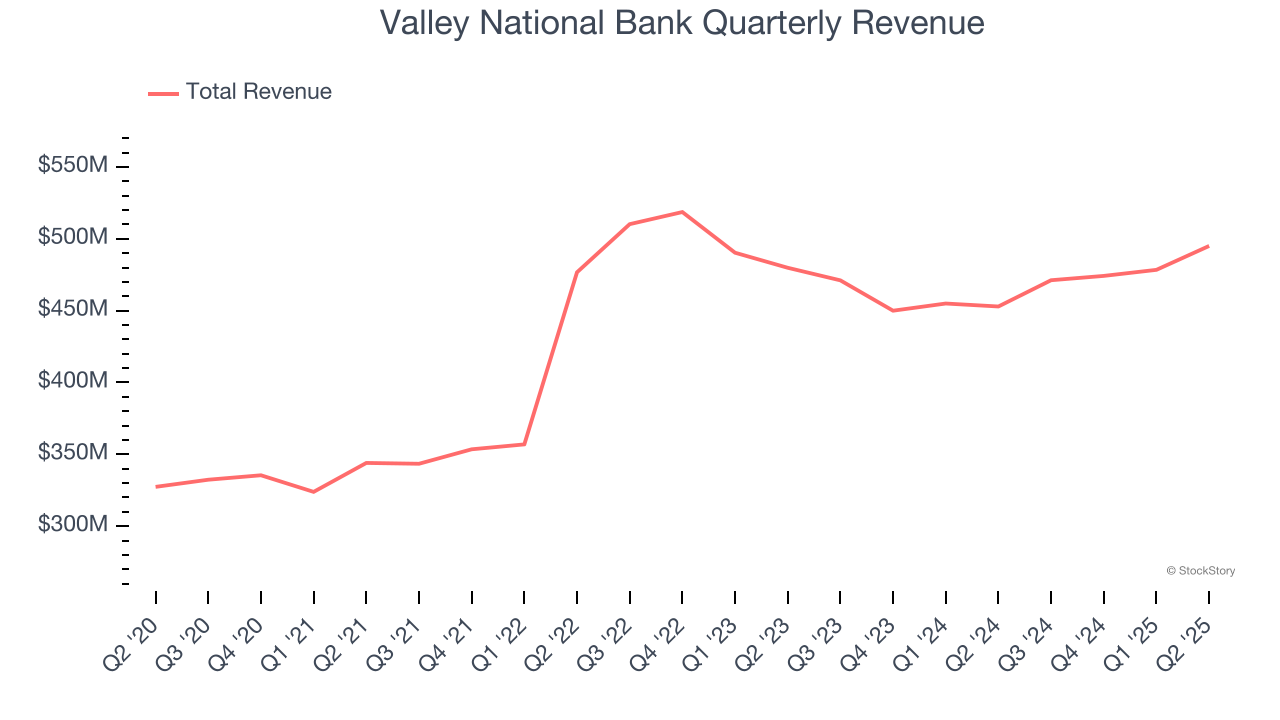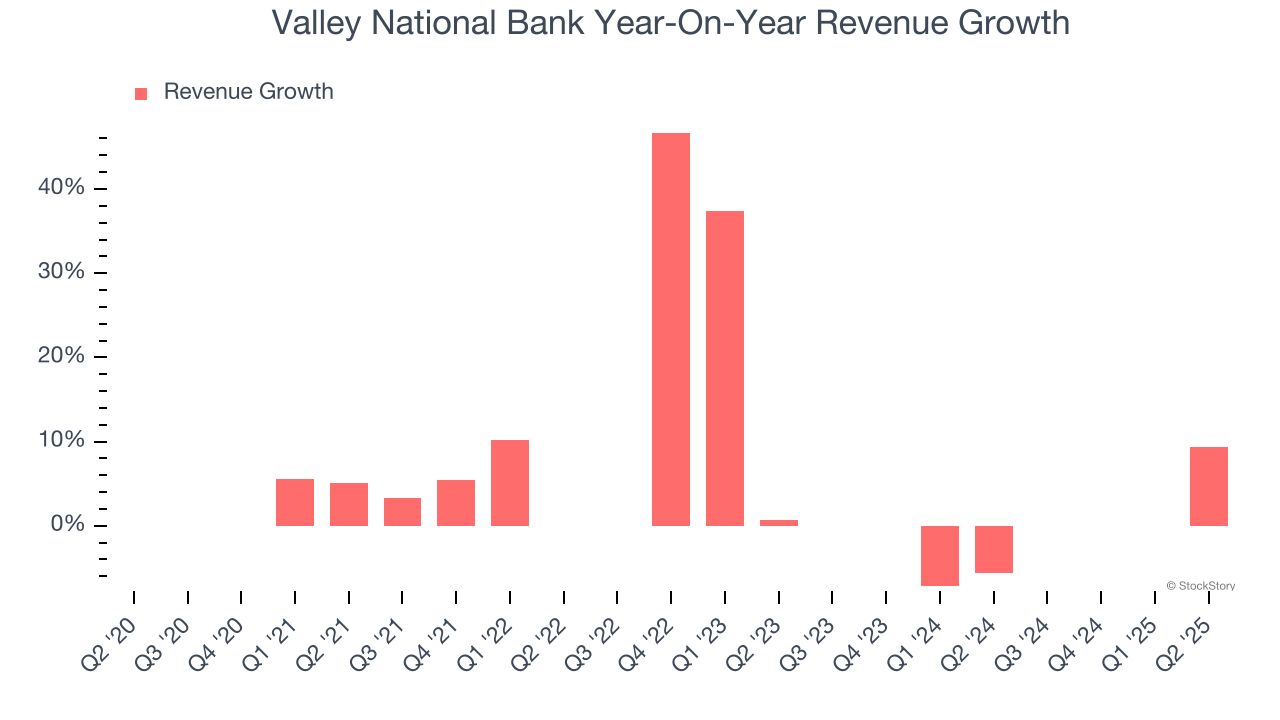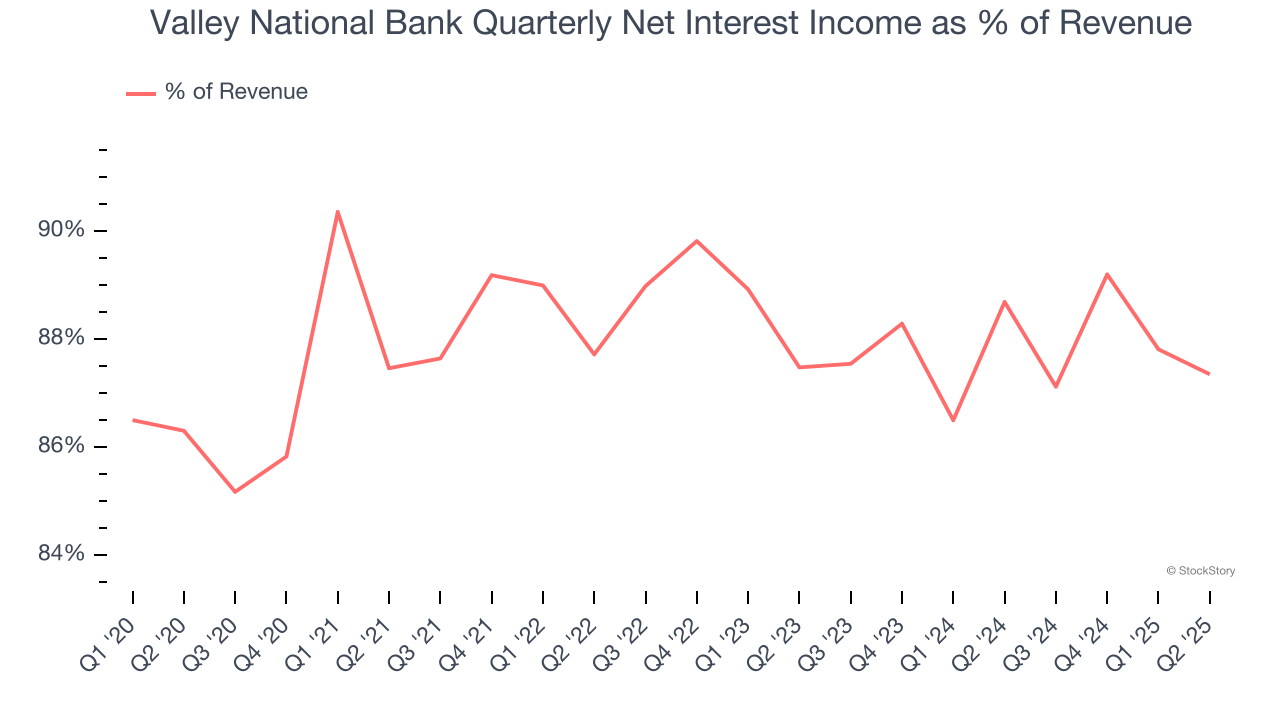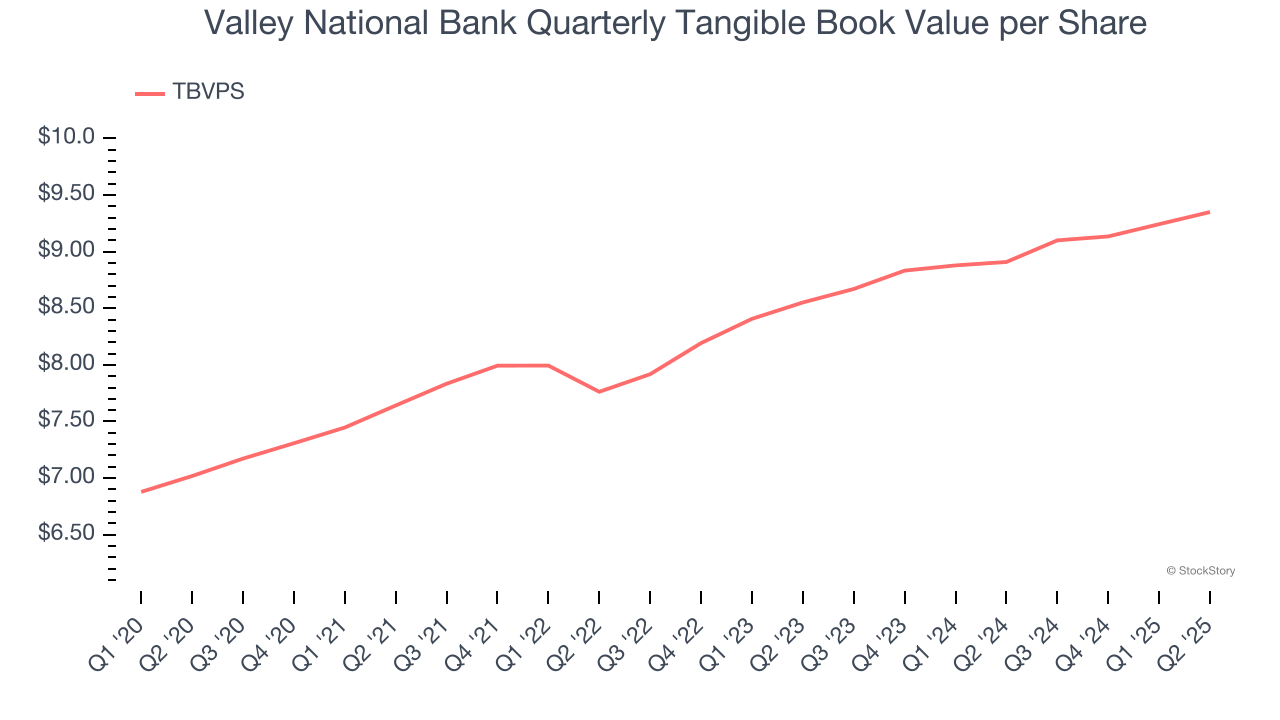
Regional banking company Valley National Bancorp (NASDAQ: VLY) reported Q2 CY2025 results exceeding the market’s revenue expectations, with sales up 9.3% year on year to $495 million. Its non-GAAP profit of $0.23 per share was 6.4% above analysts’ consensus estimates.
Is now the time to buy Valley National Bank? Find out by accessing our full research report, it’s free.
Valley National Bank (VLY) Q2 CY2025 Highlights:
- Net Interest Income: $432.4 million vs analyst estimates of $432.7 million (7.6% year-on-year growth, in line)
- Net Interest Margin: 3% vs analyst estimates of 3% (17 basis point year-on-year increase, in line)
- Revenue: $495 million vs analyst estimates of $492.5 million (9.3% year-on-year growth, 0.5% beat)
- Efficiency Ratio: 55.2% vs analyst estimates of 57.4% (2.2 percentage point beat)
- Adjusted EPS: $0.23 vs analyst estimates of $0.22 (6.4% beat)
- Market Capitalization: $5.44 billion
Company Overview
Tracing its roots back to 1927 during the economic boom before the Great Depression, Valley National Bancorp (NASDAQGS:VLY) operates Valley National Bank, providing commercial, consumer, and wealth management banking services across several states.
Sales Growth
From lending activities to service fees, most banks build their revenue model around two income sources. Interest rate spreads between loans and deposits create the first stream, with the second coming from charges on everything from basic bank accounts to complex investment banking transactions.
Over the last five years, Valley National Bank grew its revenue at an impressive 10.4% compounded annual growth rate. Its growth beat the average bank company and shows its offerings resonate with customers.

Long-term growth is the most important, but within financials, a half-decade historical view may miss recent interest rate changes and market returns. Valley National Bank’s recent performance marks a sharp pivot from its five-year trend as its revenue has shown annualized declines of 2% over the last two years.  Note: Quarters not shown were determined to be outliers, impacted by outsized investment gains/losses that are not indicative of the recurring fundamentals of the business.
Note: Quarters not shown were determined to be outliers, impacted by outsized investment gains/losses that are not indicative of the recurring fundamentals of the business.
This quarter, Valley National Bank reported year-on-year revenue growth of 9.3%, and its $495 million of revenue exceeded Wall Street’s estimates by 0.5%.
Net interest income made up 88% of the company’s total revenue during the last five years, meaning Valley National Bank barely relies on non-interest income to drive its overall growth.

Our experience and research show the market cares primarily about a bank’s net interest income growth as non-interest income is considered a lower-quality and non-recurring revenue source.
Today’s young investors won’t have read the timeless lessons in Gorilla Game: Picking Winners In High Technology because it was written more than 20 years ago when Microsoft and Apple were first establishing their supremacy. But if we apply the same principles, then enterprise software stocks leveraging their own generative AI capabilities may well be the Gorillas of the future. So, in that spirit, we are excited to present our Special Free Report on a profitable, fast-growing enterprise software stock that is already riding the automation wave and looking to catch the generative AI next.
Tangible Book Value Per Share (TBVPS)
Banks profit by intermediating between depositors and borrowers, making them fundamentally balance sheet-driven enterprises. Market participants emphasize balance sheet quality and sustained book value growth when evaluating these institutions.
This is why we consider tangible book value per share (TBVPS) the most important metric to track for banks. TBVPS represents the real, liquid net worth per share of a bank, excluding intangible assets that have debatable value upon liquidation. On the other hand, EPS is often distorted by mergers and flexible loan loss accounting. TBVPS provides clearer performance insights.
Valley National Bank’s TBVPS grew at a decent 5.9% annual clip over the last five years. However, TBVPS growth has recently decelerated a bit to 4.6% annual growth over the last two years (from $8.55 to $9.35 per share).

Over the next 12 months, Consensus estimates call for Valley National Bank’s TBVPS to grow by 7.5% to $10.05, mediocre growth rate.
Key Takeaways from Valley National Bank’s Q2 Results
It was good to see Valley National Bank top analysts’ EPS and efficiency ratio expectations this quarter. Zooming out, we think this was a decent quarter. The stock remained flat at $9.75 immediately following the results.
So should you invest in Valley National Bank right now? What happened in the latest quarter matters, but not as much as longer-term business quality and valuation, when deciding whether to invest in this stock. We cover that in our actionable full research report which you can read here, it’s free.





